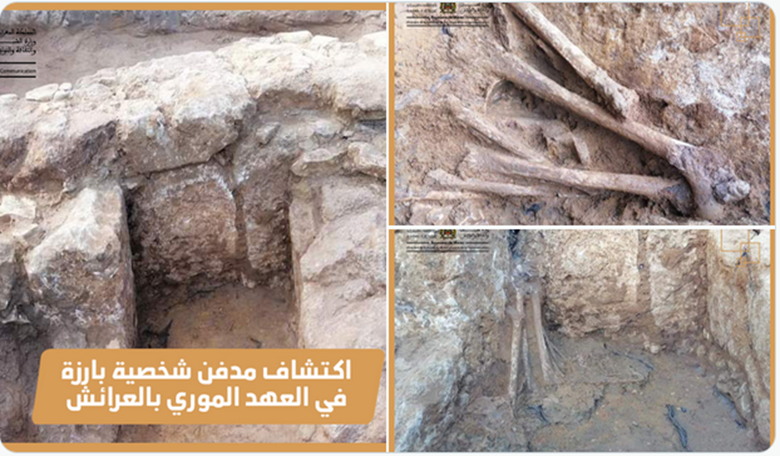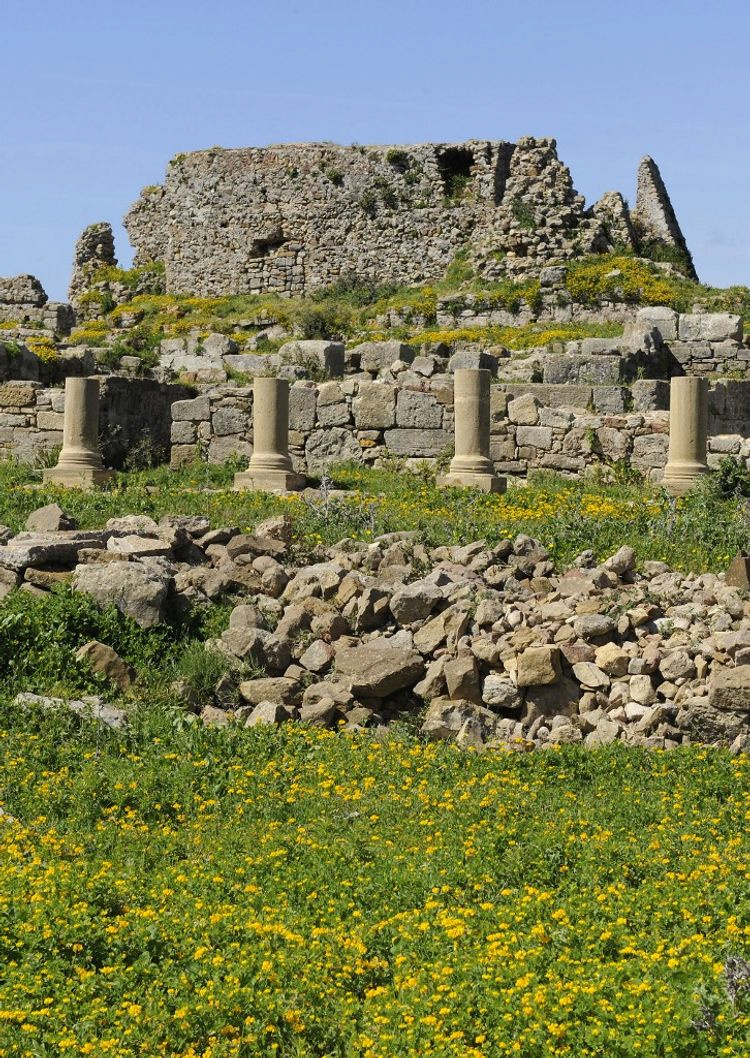Morocco: The discovery of the burial of a prominent figure in the Moorish Amazigh era dating back more than 2000 years

The ruins of the ancient city of Lyxos, north of the seaport city of Larache in Morocco
"We carried out emergency salvage excavations with scientific excavations, and fortunately the tomb's core was untouched, and we identified the internal structure and personal belongings with it, which is an iron knife blade."
The National Institute of Archeology and Heritage in Morocco reported the discovery of “the remains of an ancient burial dating back to the Moorish-Amazigh era prior to the Roman occupation, dating back more than 2000 years” in the Larache region (northwest of Morocco). This discovery would “contribute to enriching our knowledge of funerary practices and beliefs.” The religion that was circulated within the village community in the Lokos Basin region during the Moorish era, which extended from the eighth century BC to the year 40 AD.

According to the same source, it is expected that laboratory analyzes will be conducted on the remains of the corpse with “carbon 14”, “to provide an accurate dating of the bones,” which will bring closer to “the resumption of research to know the rituals of the rural area during the Mauryan period, whose inhabitants are documented by written sources.”
The discovery process was led by Moroccan archaeologists Abdel Aziz El-Khayari and Ammar Akraz, and a professor at the Institute of Archeology and Heritage, Abdel-Aziz El-Khayari, said, “What happened at the site were rescue or emergency excavations, because they were not programmed. It was monitored by the governorate of the archaeological site of Lixus.” Al-Khayari added, in a statement to the Moroccan news site “Hespress”, that “the funerary piles in northern Morocco differ from other piles, as they are like large mounds, which can range between twenty to thirty meters, and their height ranges between one and three meters. meters, and this mound extends for more than twenty meters, and is approximately three meters high, and similar ones have already been found in the area.”

The remains of an ancient burial dating back to the Moorish era prior to the Roman occupation, dated more than 2,000 years ago in Morocco
The archaeologist indicated that “we intervened because the owner of the land started the work of building a house, and a mound appeared to him forming a problem, and he did not know that it was a burial, because it was made of dirt. And I told the Institute of Archeology, which intervened immediately.” He continued, “We carried out urgent salvage excavations with scientific excavations, and fortunately the cavity of the tomb was not touched. He said, “These mounds require a lot of labor, unlike similar burials. This is built, and the stones that are covered with it for protection are cut and hewn, and brought from a far place, often from the coast, because the type of stone used is not found in the place, and this great care means that the person buried has An important legal value, we assume that he is the head of the Moorish tribe, because he is located in the rural area.

The photo shows the ruins of the ancient city of Lyxos, north of the sea port of Larache in Morocco.
In the context, El-Khayari stopped at the “Moorish civilization,” saying: “The local Moorish community belongs to the ancient Amazigh groups in North Africa, and the Moorish kingdom and civilization are known. They are Amazighs, preceding, of course, the Roman entry.” We do not know the belief behind this yet, as this is an archaeological ritual linked to beliefs and not arbitrarily, and it is found in other burials in the direction of the Great Palace, which have funerary mounds spaced in the rural area.
On the importance of the site, Al-Khayari stated that it provides researchers with “information about the funerary rituals of burying the dead, and dealing with it locally,” citing: “This is neither a Phoenician nor a Carthaginian ritual, as it is a different ritual than the rituals of the Phoenicians and Romans who completely burn the corpse, with the remains placed in time, and burial on the back. The burial shows rituals specific to the Moors prior to the Roman presence. We do not yet know what the religious rituals behind it are.
Source : websites

